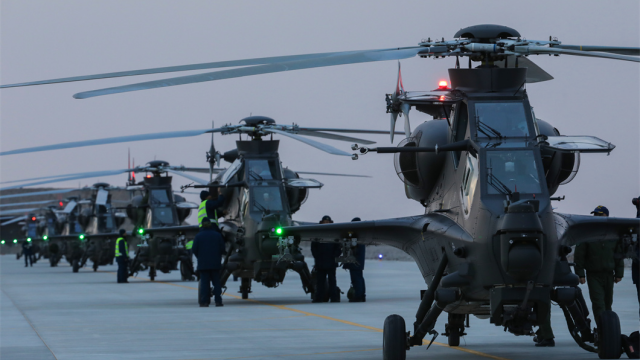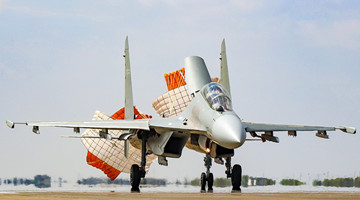By Jiang Tianjiao
The American side’s denial of the Yoon Suk-yeol administration’s recent statement that the two countries are discussing the possibility of conducting nuclear exercises and seeking to share America’s nuclear weapons reflected an intriguing shift of attitude.
The Biden administration’s overt rejection of the ROK’s pursuit of the so-called bilateral nuclear exercise is based on three deep-level considerations. First, the US rather than the ROK holds the initiative in bilateral alliance. Whether to carry out the so-called “nuclear exercise” should be America’s call rather than being proposed by the ROK. Second, Washington is making a veiled withdrawal to give Pyongyang a warning. Washington’s rejection of the US-ROK nuclear exercise is a step to both avoid an escalation of the peninsular situation and to try DPRK’s reaction. Biden administration may be waiting for the right timing with “nuclear exercise” as an ace up its sleeve in response to the actions that Pyongyang may take, thus giving itself ample leeway. Third, Biden still hopes to reserve some space for talks on non-proliferation and arms control. If his administration accepts ROK’s proposal to hold a nuclear exercise, that’s equivalent to agreeing to share nuclear weapons with it, which may trigger the chain effect of nuclear proliferation across the whole Northeast Asia. As a Democratic president, Biden, as convention has it, should be more positive on non-proliferation and arms control. This, coupled with his early-year experience in pushing the nuclear disarmament between the US and former Soviet Union, probably makes him, in the final stage of his political career, unwilling to be criticized – much less remembered – for providing nuclear weapons to other countries.
However, even if Biden doesn’t say yes now, his strategy of consistently advancing “extended deterrence” in Northeast Asia and the entire Asia Pacific in the coming period will remain unchanged, and his country will continue to function as a nuclear protector. There are three reasons for this.
First, the Russia-Ukraine conflict has taken a far-reaching and deep-going toll on the global geopolitical map and international security governance structure and has considerably augmented the possibility of nuclear proliferation. For one thing, the complete rupture of US-Russia ties makes their original bilateral arms control system hard to sustain and forces both sides to step up the R&D and deployment of new-generation strategic weapons. An arms race between the world’s two major powers may jeopardize global strategic stability and put security pressure on other nuclear weapon states. For another, the Russia-Ukraine conflict has exposed the defects in the current international security governance mechanism, prompting some non-nuclear weapon states to actively seek to own nuclear weapons for “self-protection” and others to seek nuclear protection from the US or even to share nuclear weapons with it.
Second, the US provided nuclear protection for its Northeast Asian allies to the point of “quasi-sharing” of nuclear weapons during the Cold War period. Declassified files show that the US deployed up to 3,200 pieces of nuclear weapons at the forward land position in the Pacific region in 1967, including about 1,000 pieces in ROK, although to keep the ROK troops from using these weapons and consequently triggering a World War, the US forces in ROK strictly controlled the right of launch and withheld key information such as types of weapons and location of deployment. Therefore, the ROK side never really shared nuclear weapons with the US. Likewise, the US also deployed nuclear weapons at the forward position of Japan, but secretly through a “secret pact” because of the strong anti-nuclear sentiments in Japan then arising from the atomic bombing in Hiroshima and Nagasaki. Although the US pulled away those nuclear weapons after the Cold War, the conservatives in Japan and ROK have never given up on possessing them.
Third, over the years, the US-led NATO has established a whole set of “extended deterrence” system, and there is a growing possibility of the US copying this system in Northeast Asia or the whole Asia Pacific. In the early stage of the Cold War, the Eisenhower administration actively shared its nuclear weapons with NATO allies, and let them hold a launch key through a “two key” mechanism. After the Cold War, the US continued to deploy nuclear bombs at the forward position of Europe and allowed its allies to pilot warplanes to drop them – a sign of equal participation and clear division of work. In Northeast Asia, the US already formed the “extended deterrence” dialogue mechanism with Japan and ROK separately around 2010 in imitation of NATO’s nuclear consultation mechanism. Today those two countries, once again copying the NATO model, proposed to drop the nuclear weapons deployed by the US on their soil with their own air force and warplanes in order to intensify nuclear protection.
Further intensification of America’s “extended deterrence” system would add another to the pile on the security and stability in Northeast Asia or even the world at large. Bearing the brunt is the Korean peninsula nuclear issue. Any step by the US-Japan and US-ROK alliances toward nuclear sharing and exercise will only aggravate the tension on the peninsula and increase the risk of a nuclear war. Moreover, if Japan and ROK, being non-nuclear weapon states themselves, get their hands on nuclear weapons, they would send subversive shock waves across the international non-proliferation system. Previously the AUKUS nuclear submarine cooperation was already a gross violation of the purposes of the Treaty on the Non-Proliferation of Nuclear Weapons (NPT) and tempted many in Japan and ROK to call for similar cooperation. Therefore, the nuclear sharing with these two countries would also start chain effects among other non-nuclear weapon countries. The wide possession of nuclear weapons will spell disaster for international security and stability. At last, countries threatened by America’s “extended deterrence” system will be forced to take necessary military reactions to ensure their own security. Such a strategy will undoubtedly take Northeast Asia and the world in general to further division and confrontation, and will eventually backfire and put America in a greater sense of insecurity.
(The author is an associate professor at Fudan Development Institute)
Editor's note: Originally published on huanqiu.com, this article is translated from Chinese into English and edited by the China Military Online. The information and opinions in this article do not necessarily reflect the views of eng.chinamil.com.cn.









